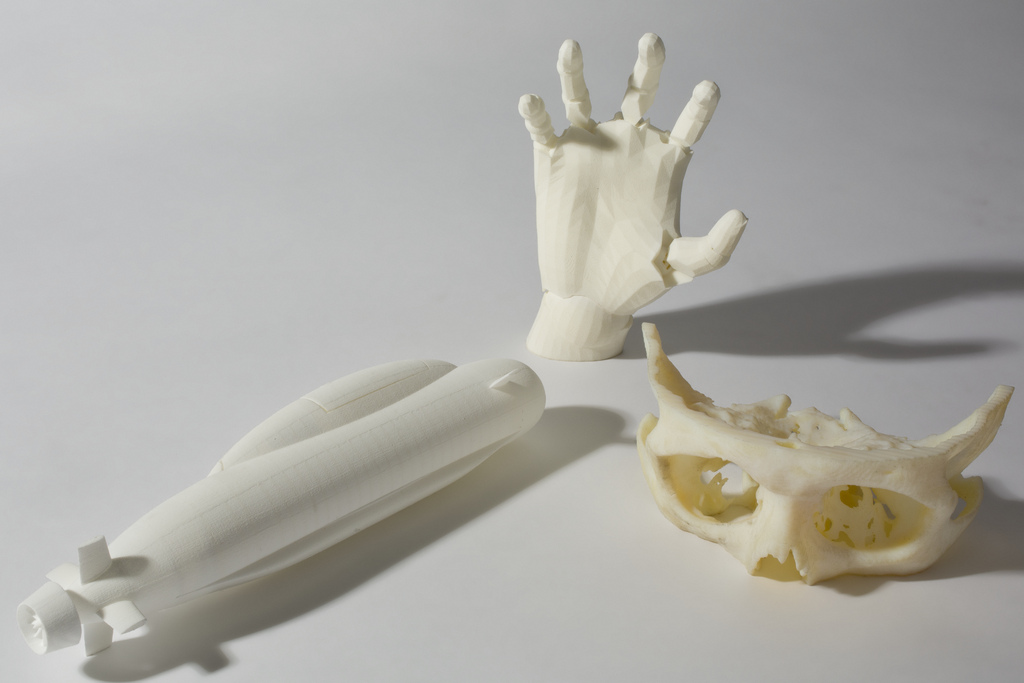Need to attend your boss’s daughter’s 1st birthday, and forgot to get a present? No worries, if you have a 3D printer, you can, well, print a gift. Anything, we mean it. A baby elephant, a figurine of the baby girl herself, a Transformers, a race car, or a 3D congratulatory card — you’re only limited by your imagination. That’s the potential of 3D printing that’s almost already been realized, considering these devices are becoming affordable, and manufacturers are beginning to target the home-use market. However, in terms of really changing the way we live, we’ve not even scratched the surface.
3D printing has the power to bring manufacturing capabilities to the individual. It works by adding minute layers of a material (plastic, acrylic, anything) on top of each other, creating a 3D model.
From changing the way humans create things to printing food, from fabricating human organs to (ahem) printing guns — everything is possible. If you recall the amazing movie “Transformers 4,” using transformium they were actually able to make a gun or a high-tech computer/speaker in an instant, though of course, this is fiction! In this guide, we will talk about the most mind-boggling 3D printing applications that have the potential of changing the way humans live.
3D printing can solve hunger in an unimaginably innovative way
Additive manufacturing of food is in a nascent stage, but it’s moving along gradually. The technology for printing food is being developed by squeezing out layer after layer of edible material into 3-dimensional objects. Flat foods such as candies, crackers, pasta, and pizza are the first candidates for being printed via 3D printers. NASA, in fact, has contracted a venture to Systems and Materials Research Consultancy to study the feasibility of printing food in space.
Currently, there are challenges germane to the food texture being printed and the variety of foods that can be printed. However, as 3D printing evolves and a wider range of edible 3D-printing ready materials become available, these challenges will be overcome.
Is this what America needs, the ability to print out a glazed donut? We do need to print out a treadmill! So could you print out your own Dorito? Would you even have to buy a Snickers bar if you can just print one out? We will soon find out!

3D printing can transform education
The ability to bring ideas into a tangible shape can help significantly improve the quality of education. With the assurance that ideas just won’t remain intangible concepts, students are bound to be motivated to think creatively and create new products.
Engineering students will be able to print out prototypes that will enhance their understanding of physical concepts. Architecture students can print 3D models of their designs in the classrooms. Geography students can envision their world more clearly with the help of 3D population maps, demographic charts, and topography maps. Students of chemistry can understand the minutest of phenomena using 3D models of molecules. The possibilities are literally endless.
Just do not give that wackjob Lex Luthor this ability, he will just print out Doomsday again and America will just allow him to do that! That was a goofy part of that movie, but “Dawn of Justice” was decent overall!
Custom manufacturing without scaling problems

The single factor that has kept manufacturers from offering customizations to all products (from a pen to an airplane) is that they can’t scale up and build economies of scale by creating many prototypes. 3D printing solves this problem. Companies have already started offering customization services to end users as well as small businesses.
With simple web-based customization software, end users can create customizations in a standardized product, and companies can then 3D-print them. So, you think there are too many choices while selecting your phone covers? Wait until you get to choose the shape, size, material, look, and feel, too.
3D printing — impact on military operations and warfare
The military can use 3D printing to design and “print” innovative weapons on demand. Though the possibility to print guns is also among the major concern around 3D printing’s future trajectory, this is undoubtedly one of the high-impact applications.
3D printing as a game changer in the field of medicine
3D printing can create perfect replicas of human organs, enabling doctors and surgeons to diagnose problems more accurately. In cases where a surgical tool is needed immediately, surgeons can save vital hours by printing them than waiting for a procurement.
The possibility of using 3D printing to create soft-tissue architecture for reconstructive surgeries is being explored. Advanced research efforts are being made to 3D print stem cells that can create living tissues and human organs. Because stem cells can be made to transform into any kind of living cell, the applications of 3D bioprinting can be the biggest advancement in medical science since the time of antibiotics.
Applications in the field of architecture
Architects can print very realistic 3D models of complex designs and pinpoint aspects of their vision to clients. Also, this practice can help identify architectural and constructional flaws well before the first brick is laid.
3D printing giving new lease of life to differently-abled individuals

On October 24, 2014, a UK born girl became the first child to have a prosthetic hand entirely made with 3D printers. Since then research in 3D printing applications in making medical devices such as prosthetics and all kinds of artificial limbs has been in overdrive.
In February 2015, the FDA gave approval to the marketing of a surgical use bolt that promises less invasive foot surgery, eliminating the need for drilling through the bone. 3D printing, thus, can be a boon to the whole idea of human mobility, because of its capabilities of creating custom fit, affordable, and reparable medical implants and artificial limbs.
3D printing will change the way humans dress up
3D printing has already impacted the apparel industry; fashion designers are already trying out 3D printed shoes, dresses, and bikinis. Nike used 3D printing for prototyping and manufacturing its Vapor Laser Talon football shoes in 2012. New Balance uses 3D printing to manufacture custom fitting shoes for competitive athletes. Today, 3D printing is being used by manufacturers to create custom-fitting and custom-designed dresses for consumers. Such on-demand customization could very well reach households, and that will completely transform the way humans dress up.
3D printing as a game changer for the automobile industry
Audi RSQ was created using robotized mechanisms that are a direct result of 3D printing. This is just the beginning of how automakers might be able to use 3D printing to create futuristic vehicles and bring them to markets much quicker than they are able to today.
An amazing future
There you have it. We’re witnessing an era where manufacturing and “printing” are fusing into each other, and this points toward a future that’s very different than anybody could have imagined.
Photo credit: Shutterstock



